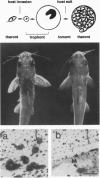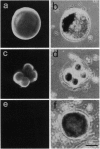Abstract
We used the common fish pathogen Ichthyophthirius multifiliis as a model for studying interactions between parasitic ciliates and their vertebrate hosts. Although highly pathogenic, Ichthyophthirius can elicit a strong protective immune response in fish after exposure to controlled infections. To investigate the mechanisms underlying host resistance, a series of passive immunization experiments were carried out using mouse monoclonal antibodies against a class of surface membrane proteins, known as immobilization antigens (or i-antigens), thought to play a role in the protective response. Such antibodies bind to cilia and immobilize I. multifiliis in vitro. Surprisingly, we found that passive antibody transfer in vivo caused rapid exit of parasites from the host. The effect was highly specific for a given I. multifiliis serotype. F(ab)2 subfragments had the same effect as intact antibody, whereas monovalent Fab fragments failed to protect. The activity of Fab could, nevertheless, be restored after subsequent i.p. injection of bivalent goat anti-mouse IgG. Parasites that exit the host had detectable antibody on their surface and appeared viable in all respects. These findings represent a novel instance among protists in which protective immunity (and evasion of the host response) result from an effect of antibody on parasite behavior.
Full text
PDF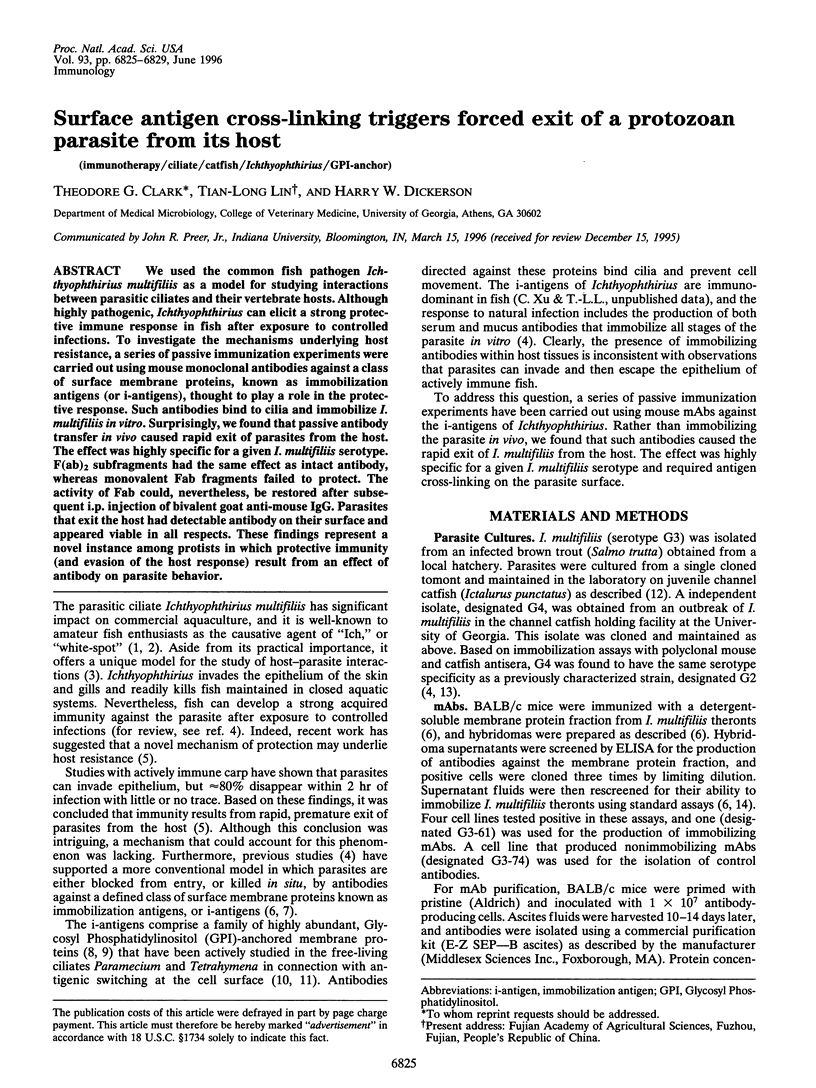
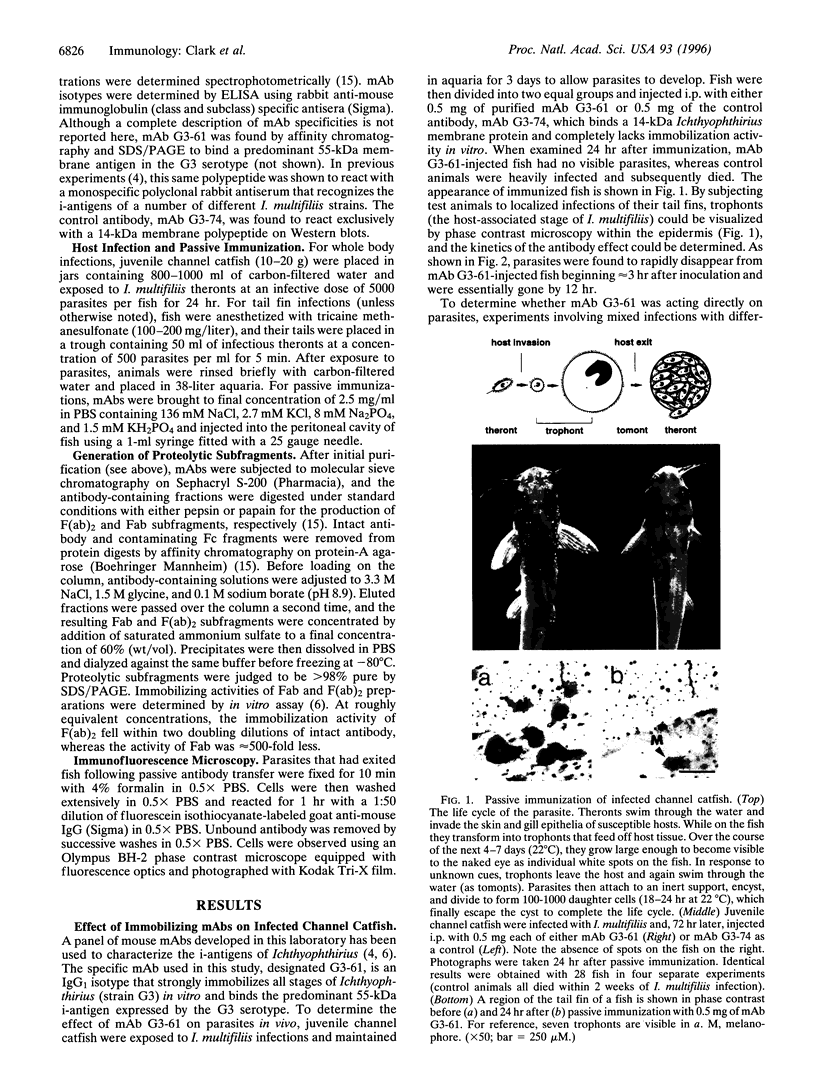

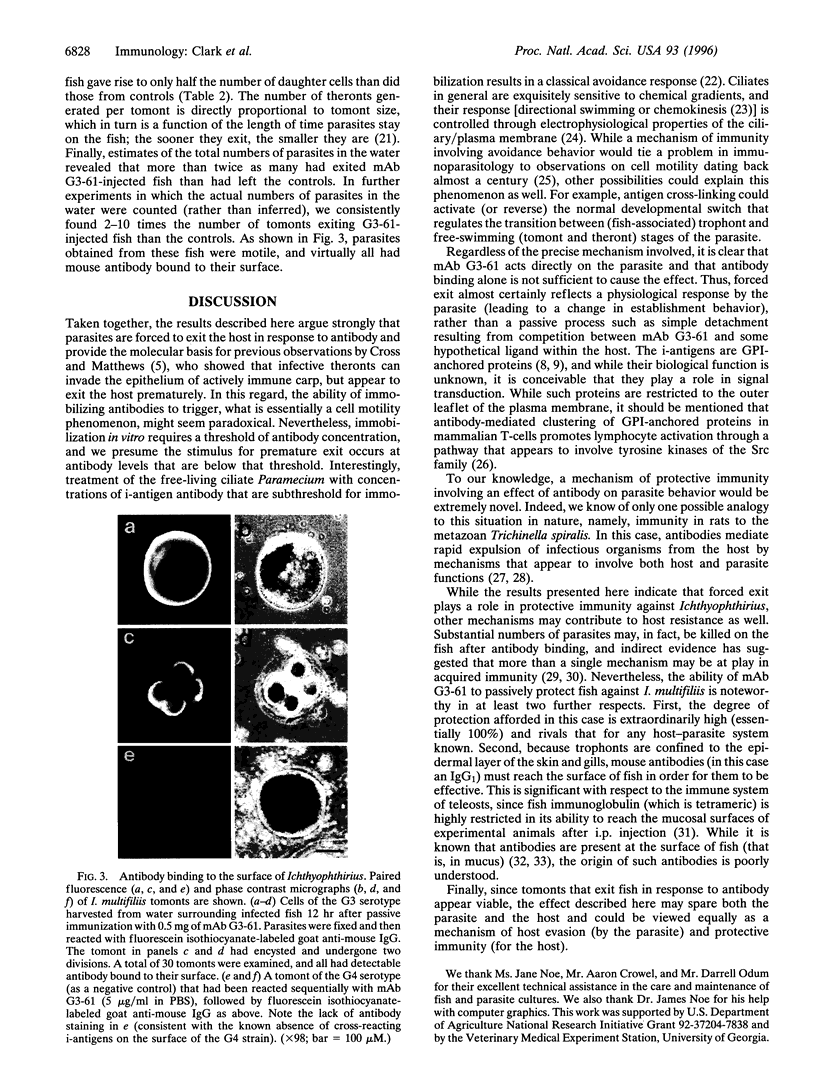
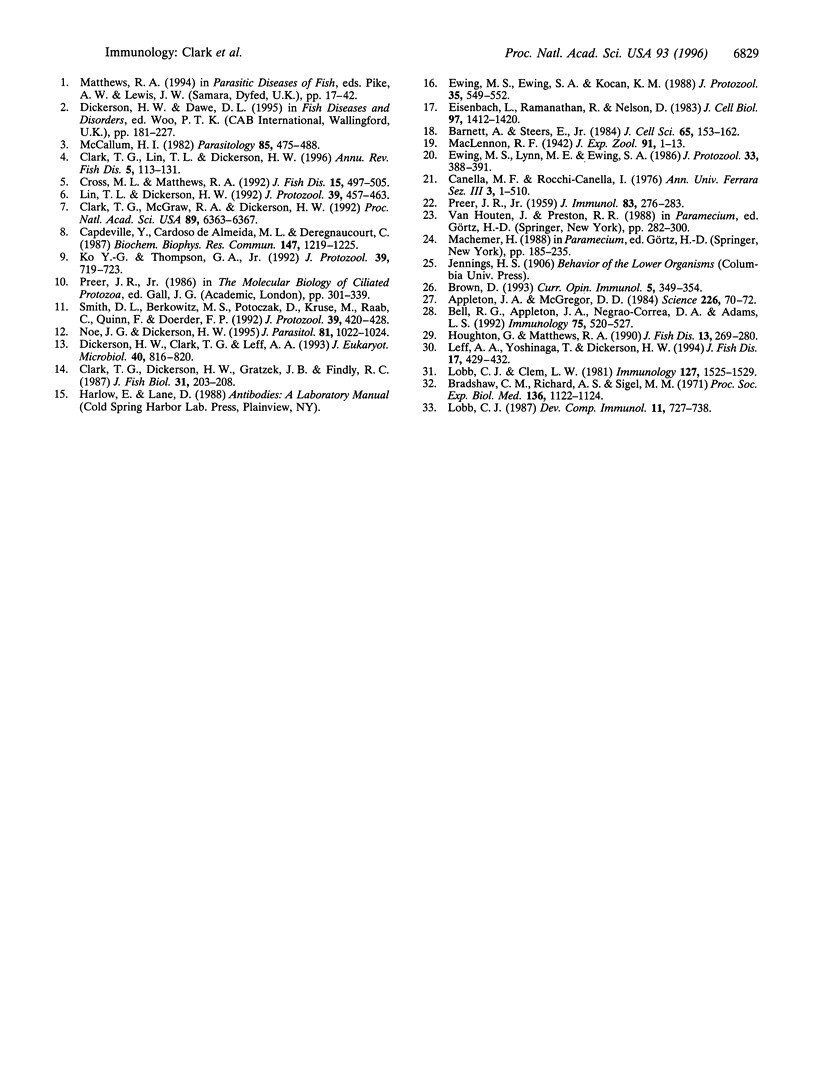
Images in this article
Selected References
These references are in PubMed. This may not be the complete list of references from this article.
- Appleton J. A., McGregor D. D. Rapid expulsion of Trichinella spiralis in suckling rats. Science. 1984 Oct 5;226(4670):70–72. doi: 10.1126/science.6474191. [DOI] [PubMed] [Google Scholar]
- Barnett A., Steers E., Jr Antibody-induced membrane fusion in Paramecium. J Cell Sci. 1984 Jan;65:153–162. doi: 10.1242/jcs.65.1.153. [DOI] [PubMed] [Google Scholar]
- Bell R. G., Appleton J. A., Negrao-Correa D. A., Adams L. S. Rapid expulsion of Trichinella spiralis in adult rats mediated by monoclonal antibodies of distinct IgG isotypes. Immunology. 1992 Mar;75(3):520–527. [PMC free article] [PubMed] [Google Scholar]
- Bradshaw C. M., Richard A. S., Sigel M. M. IgM antibodies in fish mucus. Proc Soc Exp Biol Med. 1971 Apr;136(4):1122–1124. doi: 10.3181/00379727-136-35443. [DOI] [PubMed] [Google Scholar]
- Brown D. The tyrosine kinase connection: how GPI-anchored proteins activate T cells. Curr Opin Immunol. 1993 Jun;5(3):349–354. doi: 10.1016/0952-7915(93)90052-t. [DOI] [PubMed] [Google Scholar]
- Capdeville Y., Cardoso de Almeida M. L., Deregnaucourt C. The membrane-anchor of Paramecium temperature-specific surface antigens is a glycosylinositol phospholipid. Biochem Biophys Res Commun. 1987 Sep 30;147(3):1219–1225. doi: 10.1016/s0006-291x(87)80200-0. [DOI] [PubMed] [Google Scholar]
- Clark T. G., McGraw R. A., Dickerson H. W. Developmental expression of surface antigen genes in the parasitic ciliate Ichthyophthirius multifiliis. Proc Natl Acad Sci U S A. 1992 Jul 15;89(14):6363–6367. doi: 10.1073/pnas.89.14.6363. [DOI] [PMC free article] [PubMed] [Google Scholar]
- Dickerson H. W., Clark T. G., Leff A. A. Serotypic variation among isolates of Ichthyophthirius multifiliis based on immobilization. J Eukaryot Microbiol. 1993 Nov-Dec;40(6):816–820. doi: 10.1111/j.1550-7408.1993.tb04480.x. [DOI] [PubMed] [Google Scholar]
- Eisenbach L., Ramanathan R., Nelson D. L. Biochemical studies of the excitable membrane of paramecium tetraurelia. IX. Antibodies against ciliary membrane proteins. J Cell Biol. 1983 Nov;97(5 Pt 1):1412–1420. doi: 10.1083/jcb.97.5.1412. [DOI] [PMC free article] [PubMed] [Google Scholar]
- Ewing M. S., Ewing S. A., Kocan K. M. Ichthyophthirius (Ciliophora): population studies suggest reproduction in host epithelium. J Protozool. 1988 Nov;35(4):549–552. doi: 10.1111/j.1550-7408.1988.tb04150.x. [DOI] [PubMed] [Google Scholar]
- Ko Y. G., Thompson G. A., Jr Immobilization antigens from Tetrahymena thermophila are glycosyl-phosphatidylinositol-linked proteins. J Protozool. 1992 Nov-Dec;39(6):719–723. doi: 10.1111/j.1550-7408.1992.tb04454.x. [DOI] [PubMed] [Google Scholar]
- Lin T. L., Dickerson H. W. Purification and partial characterization of immobilization antigens from Ichthyophthirius multifiliis. J Protozool. 1992 Jul-Aug;39(4):457–463. doi: 10.1111/j.1550-7408.1992.tb04832.x. [DOI] [PubMed] [Google Scholar]
- Lobb C. J., Clem L. W. The metabolic relationships of the immunoglobulins in fish serum, cutaneous mucus, and bile. J Immunol. 1981 Oct;127(4):1525–1529. [PubMed] [Google Scholar]
- Lobb C. J. Secretory immunity induced in catfish, Ictalurus punctatus, following bath immunization. Dev Comp Immunol. 1987 Fall;11(4):727–738. doi: 10.1016/0145-305x(87)90060-7. [DOI] [PubMed] [Google Scholar]
- Noe J. G., Dickerson H. W. Sustained growth of Ichthyophthirius multifiliis at low temperature in the laboratory. J Parasitol. 1995 Dec;81(6):1022–1024. [PubMed] [Google Scholar]
- PREER J. R., Jr Studies on the immobilization antigens of Paramecium. I. Assay methods. J Immunol. 1959 Sep;83:276–283. [PubMed] [Google Scholar]
- Smith D. L., Berkowitz M. S., Potoczak D., Krause M., Raab C., Quinn F., Doerder F. P. Characterization of the T, L, I, S, M and P cell surface (immobilization) antigens of Tetrahymena thermophila: molecular weights, isoforms, and cross-reactivity of antisera. J Protozool. 1992 May-Jun;39(3):420–428. doi: 10.1111/j.1550-7408.1992.tb01475.x. [DOI] [PubMed] [Google Scholar]



